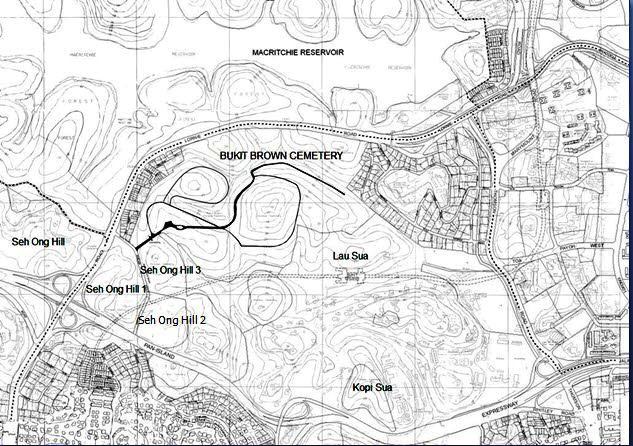Bukit Brown and Kopi Sua – Are they the same?
4
Bukit Brown Cemetery is named after George Henry Brown who came to Singapore in 1840 to start a shipping business. He bought up an area of roughly 200 acres which covered rolling hills. The Malay word for hill is “bukit” and “sua” is hill in the Hokkien dialect.
After Brown’s death the land passed through the hands of Mootapa Chitty ( a Chettair ) and Lim Chu Yi ( a Chinese businessman).
In 1872, it was bought by 3 clansman from the Ong Clan each paying $500. The land was donated to the Hokkien Clan Association without condition for dwelling, farming and burials. It was called “Seh Ong Sua”
In 1918/1919, the colonial government paid about $24.500 for a portion of the Ong burial site (97 acres) to be used as a Chinese Municipal Cemetery opened to all Chinese, rich or poor. From a private cemetery for the Ong Clan and the Hokkien community, it became a public cemetery known as Bukit Brown Cemetery in 1923.
Kopi Sua refers to the area near Mount Pleasant Road where Brown lived, which was originally named Brown’s Hill. One reason offered as to why it is called Kopi Sua – Hokkien for Coffee Hill – is that in the dialect there is no equivalent to the colour Brown. So “kopi” was the next best thing. The other reason is Brown attempted to grow coffee on the estate but it didn’t take.
What is now known as the Bukit Brown Cemetery includes 50 acres known as Lau Sua (Old Hill) which was opened and managed by the Hokkien Huay Kuan as a cemetery in 1892. So the short answer is Kopi Sua is not Bukit Brown Cemetery and vice versa. The Bukit Brown Municipal Cemetery ceased operations in 1973


Hard to uncover this info on-line. Saved this page for future research.
Superb , stick with it please
Thanks for the great info.
Growing up along Whitley Road, I have always wondered: “If Bukit Brown and Kopi Sua is one and the same, how do taxi drivers taking me home back then know that I was going to Whitley Road, and not Lornie Road for example.”
Thanks for the enlightenment.
If Kopi Sua was where George Henry Brown had lived but is now a cemetery, does this also mean his house has also since been demolished?